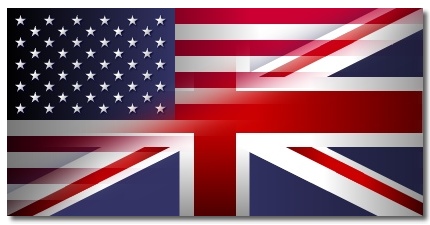There are nearly 350 million native English speakers in the world. The American version of English is spoken by around 70 percent of those native speakers, while the other 30 percent speak UK English. Even more people, 1.5 billion, speak either US or UK English non-natively. To an untrained eye UK English and US English may seem very similar. While there are plenty of similarities, there are also significant differences to be aware of. Whether you’re taking a trip across the pond or trying to make sure you’re staying in line with style guidelines, here are a few of the key differences between the two.
Vocabulary
A big difference between British and American English is the vocabulary used. These differences in vocabulary can be found in simple, commonplace words like pants (called trousers in UK English) and can cause some confusion in everyday conversations. There are hundreds of words that mean something different depending on who you’re talking to or what country you’re in. Below are a few of the most common vocabulary differences between UK and US English.
| UK | US |
| holiday | vacation |
| lift | elevator |
| secondary school | high school |
| jumper | sweater |
| flat | apartment |
While these words can get confusing, most Americans and Brits can understand each other with the help of context clues. Here is a more comprehensive list of vocabulary differences.
Spelling
If you’re an academic submitting to journals, you’re no doubt aware that while some words used in both UK and US English have similar meanings, the spelling can differ. Understanding the proper spelling for each country can help make sure you don’t get pulled up on this point. The main spelling differences in the two types of English include the following:
–er/re
The suffix –er in American English is often reversed in UK English. For example, center in US English becomes centre in UK English.
–nse/nce
Words that end with –nse in US English often take an –nce ending when spelled in UK English. For example, defense in the US would be defence in the UK, and license in the former becomes licence in the latter.
–ize/ise
Many people mistakenly think that –ize is the US spelling and –ise UK (e.g., organize vs. organise; legalize vs. legalise); however, the Oxford English Dictionary (widely considered to be the leading resource for British English) actually prefers –ize. In other words, in UK English either –ise or –ize is acceptable (though it’s vital to be consistent throughout your document), but in the US it’s always –ize.
–or/our
While American English ends many words with –or, British English adds an extra u into the mix. This makes words like color and humor in the US colour and humour in the UK.
Auxiliary Verbs
Another major difference between UK and US English pertains to auxiliary verbs, also known as helping verbs. These are used to add information, such as time and voice, to the main verb. One of the major auxiliary verbs that you will see in UK English, but rarely in US English, is the verb shall. In the UK, people use shall to express something they are going to do in the future, such as “I shall go home in 5 minutes.” While in the US shall is seen as a very formal way of speaking and is almost never used in conversation. Americans would be more likely to say something like, “I will go home in 5 minutes.”
Similarly, to express a lack of obligation in British English you might say “You needn’t write that essay,” where need and not are contracted to form the auxiliary verb needn’t. In American English, you would be more likely to contract do and not together to form don’t—“You don’t need to write that essay.”
Understanding the subtle differences between UK and US English can help to ensure you don’t fall foul of style preferences of your school, journal, or publisher. Our founder, Jinny, was born and raised in the UK but has lived in the US for many years, so we can definitely help to make sure you get it right!

